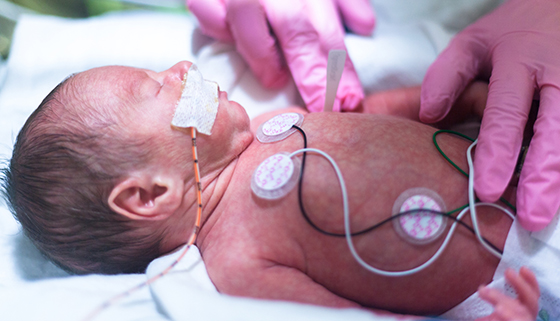Unruptured Brain Aneurysms
Featured Expert
When a blood vessel swells or bulges in one spot, it's called an aneurysm. If you've been diagnosed with an unruptured brain aneurysm, your doctor will consider many factors before deciding whether you need treatment — and if so, what that treatment should be.

I was diagnosed with an unruptured brain aneurysm. What do I do next?
First, you need to get more information. You should seek out care at a specialized center for brain aneurysm treatment.
It's important to choose a medical team that knows brain aneurysms. The more surgeries a center performs on brain aneurysms, the better it is at ensuring safe and effective results.
At Johns Hopkins, our expert neurosurgery team uses the most advanced techniques to perform more than 4,000 surgeries each year — more than 300 of those are for brain aneurysms alone.
Can people live a long time with a brain aneurysm?
Absolutely. Many aneurysms cause no symptoms at all. Some people live for years without knowing they have a brain aneurysm.
Will I need surgery to treat an unruptured brain aneurysm?
For an unruptured brain aneurysm, your doctor will decide whether it's better to treat the aneurysm now or monitor you carefully (called watchful waiting).
Certain aneurysms are more likely to bleed, or rupture. A rupture is a critical and potentially life-threatening situation. Your care team will determine how likely the aneurysm is to rupture so it can plan your treatment.
If treatment is necessary, your doctor will consider which treatment is best for your circumstances. The two most effective treatments for brain aneurysms today are:
- Microsurgical clipping: Neurosurgeons make a small opening in the skull and place a titanium clip to prevent blood from flowing into an aneurysm.
- Endovascular coiling: In this newer approach, neurosurgeons place a stent, or tube, or other devices, such as coils, inside a blood vessel or aneurysm to divert blood flow away from an aneurysm.
What does it mean when an aneurysm bleeds?
Think of an aneurysm as a balloon that forms in the wall of a blood vessel. If you keep blowing air into a balloon, the walls of the balloon stretch until it eventually pops. Aneurysms do the same thing.
When an aneurysm has bled, that means the wall of the aneurysm stretched so much that it broke. The blood inside the blood vessels then escapes from the aneurysm and spreads out over the brain's surface.
The bleeding, called subarachnoid hemorrhage, can cause serious damage. That's why doctors do everything possible when treating a brain aneurysm to prevent it from rupturing.
How will I know if a brain aneurysm has ruptured?
When an aneurysm ruptures, it causes a severe headache like no other you've ever felt.
If a brain aneurysm has ruptured, time is of the essence. Rapid medical care is critical to getting the necessary treatment for a successful recovery. With immediate, expert care, a full recovery is often possible.







